This article has been reviewed according to Science X's editorial process and policies. Editors have highlighted the following attributes while ensuring the content's credibility:
fact-checked
reputable news agency
proofread
Deadly Bangladesh cyclone one of longest seen
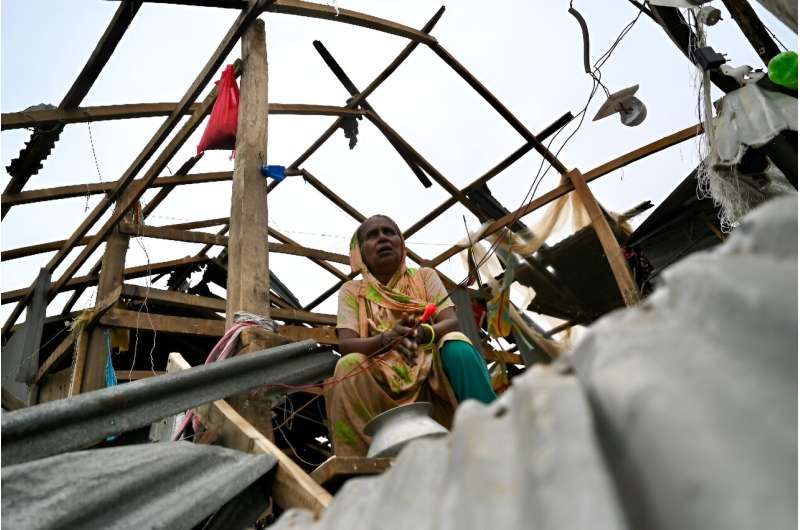
Bangladeshi weather experts said Tuesday that a deadly cyclone that carved a swath of destruction was one of the quickest-forming and longest-lasting they'd experienced, blaming climate change for the shift.
Cyclone Remal, which made landfall in low-lying Bangladesh and neighboring India on Sunday evening with fierce gales and crashing waves, left at least 38 people dead, destroyed thousands of homes, smashed seawalls and flooded cities across the two countries.
The toll includes 12 workers who died on Tuesday when a quarry collapsed in India's Mizoram state, which the government attributed to torrential rains as the storm progressed inland.
"In terms of its land duration, it is one of the longest in the country's history," Azizur Rahman, director of the state-run Bangladesh Meteorological Department told AFP, adding it had battered the country for more than 36 hours.
In contrast, Cyclone Aila, which hammered Bangladesh in 2009, lasted around 34 hours.
Cyclones have killed hundreds of thousands of people in Bangladesh in recent decades, and the number of superstorms hitting its densely populated coast has increased sharply, from one a year to as many as three, due to the impact of climate change.
Slow-moving and longer-lasting storms bring greater destruction.
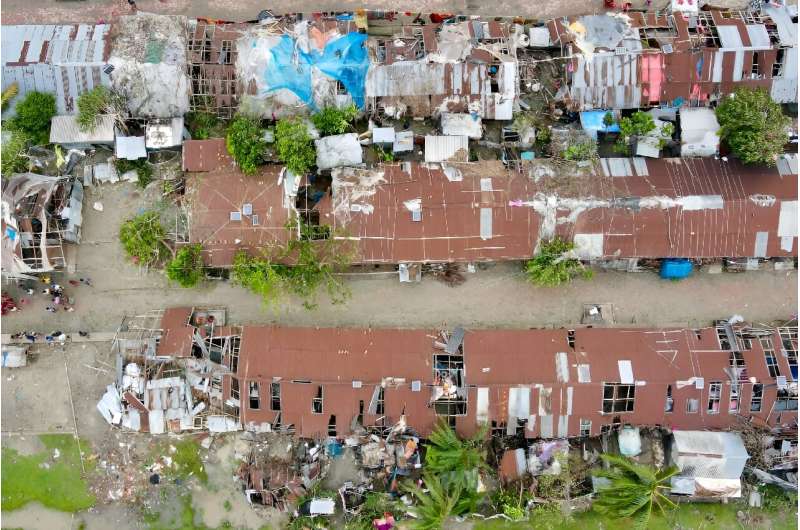
"I've seen many storms in my life but nothing like this cyclone", said Asma Khatun, an 80-year-old widow who lives with her son, a fisherman in Bangladesh's hard-hit coastal town of Patuakhali.
"Before, the storm came and went away... now it doesn't seem to go away. The incessant pouring and heavy wind kept us stuck for days".
'Impact of climate change'
Rahman said the cyclone triggered massive rains, with some cities receiving at least 200 millimeters (7.9 inches).
Storm surges breached multiple embankments, meaning seawater flooded into farmland, damaged freshwater fish farms common along the coast, or corrupted drinking water.
Bangladesh's state minister for disaster Mohibbur Rahman said 3.75 million people had been affected by the cyclone, more than 35,000 homes were destroyed, and another 115,000 damaged.
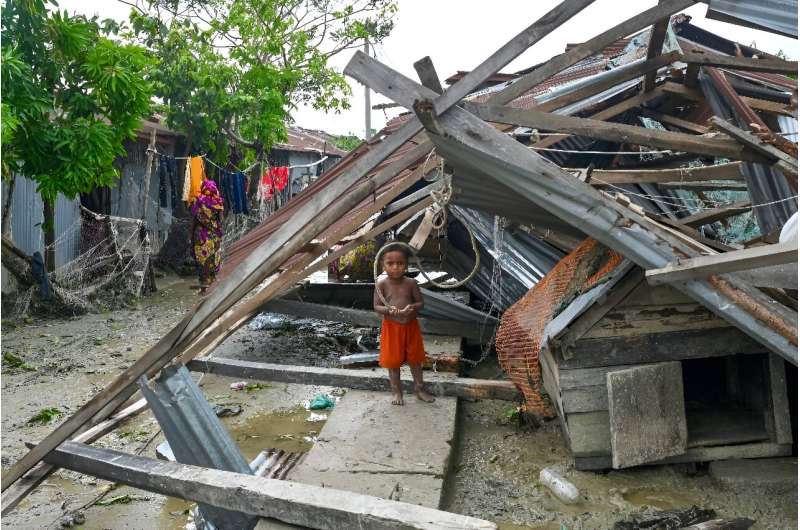
"We don't know where to go," said Setara Begum, 75, surveying the wreckage of her home after its tin roof was ripped off.
Meteorologist Rahman said the cyclone formed more quickly than almost all the cyclones they have monitored in recent decades.
"Of course, quick cyclone formation and the long duration of cyclones are due to the impact of climate change," Rahman said.
"It took three days for it to turn into a severe cyclone from low pressure in the Bay of Bengal... I've never seen a cyclone formed from a low pressure in such a quick time," he said.
"Usually, a cyclone is formed in the south and southwest of the Bay of Bengal, then takes seven to eight days to turn into a severe cyclone."
Drowned, electrocuted, crushed
But while scientists say climate change is fueling more storms, better forecasting and more effective evacuation planning have dramatically reduced death tolls.
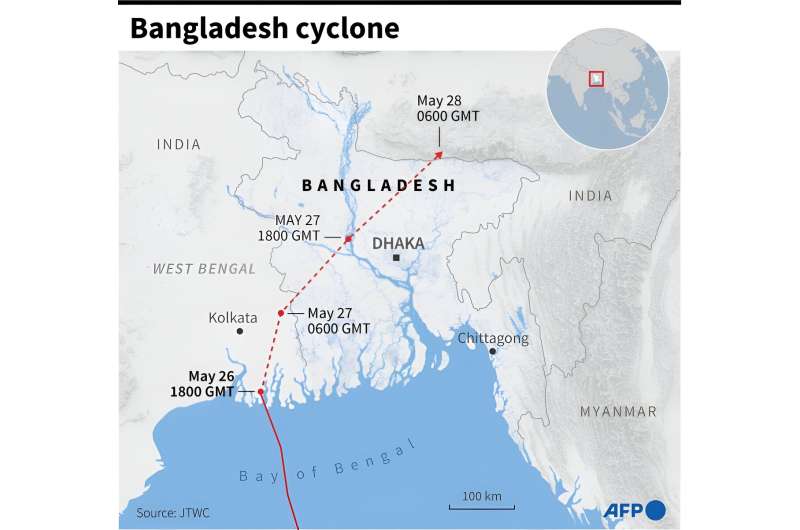
Around a million people in Bangladesh and neighboring India fled inland seeking safety -- but many people preferred to stay put to guard their homes.
In Bangladesh, Cyclone Remal killed at least 17 people, according to the disaster management office and police, who reported Tuesday the additional deaths of a husband and wife, "crushed under stacks of bricks" when their house collapsed.
Some drowned. Others were killed by debris, falling trees or electrocuted by falling power lines.
Thousands of electricity poles were torn down, and power is out across large areas, said Biswanath Sikder, chief engineer of the Bangladesh Rural Electrification Board.
"More than 20 million people are without electricity," Sikder told AFP.
In India, 21 people died, according to the latest tolls on Tuesday, including eight in West Bengal, one in Assam, as well as 12 quarry workers killed in Mizoram.
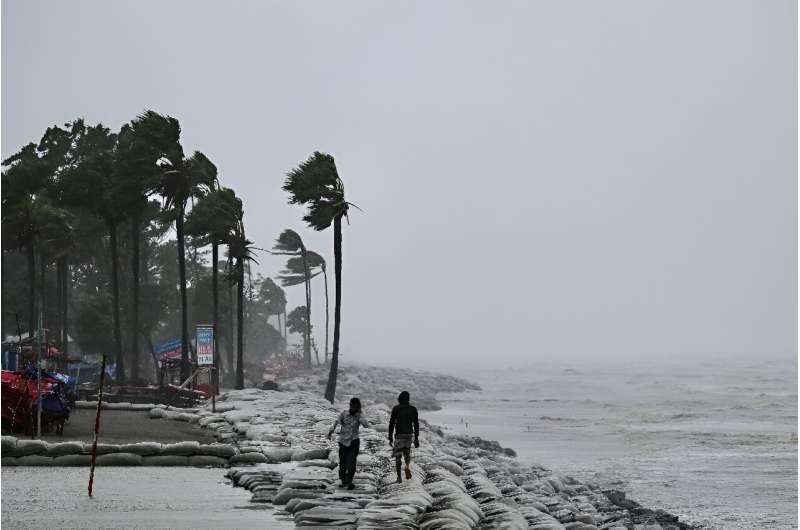
But the worst impact was stemmed by the expansive Sundarbans mangrove forest straddling Bangladesh and India -- where the Ganges, Brahmaputra and Meghna rivers meet the sea, Bangladesh's state weather department said.
The crucial sea-water coastal forests help dissipate the violence of such storms.
The International Union for Conservation of Nature (IUCN) warned this month that half of the world's mangrove ecosystems are at risk of collapse due to climate change, deforestation and pollution.
© 2024 AFP



















